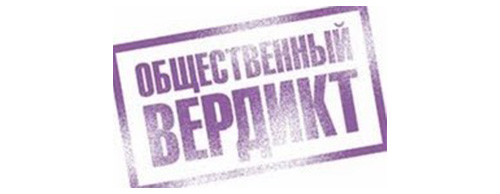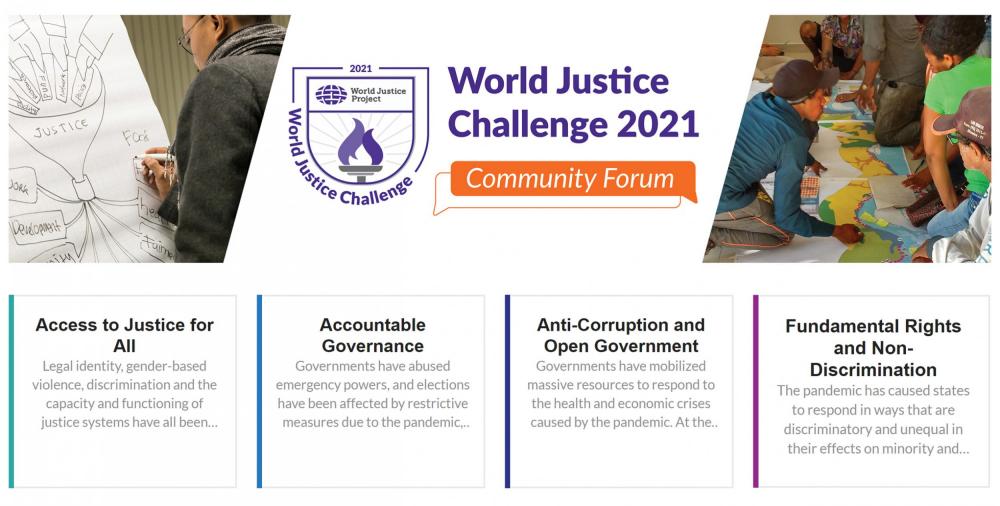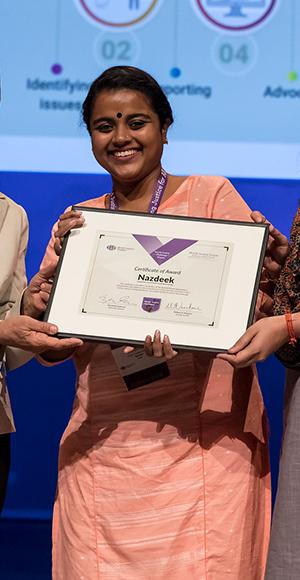Project Pitch and Q&A
Watch The Public Verdict Foundation's World Justice Challenge project pitch and join WJP's World Justice Challenge 2021 Community Forum to ask questions to project representatives, explore additional resources, meet new colleagues, and more. Join the discussion and help us build stronger rule of law values, institutions, and communities around the world.
Ask your question at the Community Forum
Project Summary
Gray Zone was initiated by the Public Verdict Foundation and is implemented by a group of human rights lawyers and organizations to prevent the spread of COVID19 throughout Russian penitentiary institutions and detention centers. A digital map reflects each COVID case reported by either convicts or their relatives, which allows lawyers and human rights defenders to file inquiries demanding action on the part of the administration. An infected person should be isolated and receive medical care. Administrations should provide required information. Relatives can initiate inquiries independently, too.
Problem Statement
In early spring of 2020, it became clear that administrations of penitentiary institutions and detention centers across Russia: did not report the actual internal situation with COVID-19; denied any pointed inquiries made by relatives and/or human rights defenders; did not provide proper medical care to those convicts whose symptoms were alarming; and did not provide preventive measures in closed, crowded environments in general.
One of the earlier, though not immediate actions taken by administrations was to restrict visitation, however when later in the summer this restriction was temporarily lifted, relatives arriving from a different region with COVID-19 test results on hand found they had to mandatorily take another test locally. That created unnecessary tension and called for extra expenses.
The biggest concern of human rights organizations, defenders, and convicts' relatives was that the COVID-19 pandemic could easily turn into a mass tragedy if not properly controlled in a due manner.
The potential scale of the virus threat—the idea of very real pandemic within closed, tightly populated institutions—was first pronounced by human rights organizations before very first reports of in-prison cases started trickling in through relatives. The administration continued to deny even a possibility of pandemic, and came out with zero public reports on the internal situation.
It was important to create and impose an accountability mechanism on the penitentiary service before the utmost danger rolled out. It was also important to act quickly and effectively and force state bodies to act in an emergency. The Gray Zone map was launched later in May, at the earliest programming possibility, providing relatives with independent inquiry templates and supporting legal instructions.
Project Description
The map very quickly became the only open resource on COVID-19 within correctional colonies, prisons, and detention centers across the entire country. It remains the only monitoring mechanism that allows for tracking changes as close to real time as possible. The project proves again and again that public/civil oversight is a powerful instrument when created and used properly.
When a report on a new COVID-19 case is received by the map, it is first cross-checked. Only after receiving supporting evidence is a new location is marked on the map. Lawyers then file an inquiry to the penitentiary service or attorney's office demanding that proper action is taken in a timely manner. Sometimes it is done through local friendly media. Over 160 COVID-19 cases have been received by the project team up to date, crosschecked, and published on the map, followed by legal inquiry, etc.
The Gray Zone thus forced penitentiary service to become more open and provide reports on regular basis through the official channels, mass media, or in response to public inquiries, which was not the case before the map was created. It was only due to the map that the only death case in the prisons due to COVID-19 thus far became public knowledge. When we learned about the need to take another test upon arrival for visitation, this problem was described and an appeal was filed to the Federal Penitentiary Service.
Project Impact and Potential for Scaling, Replication, and Sustainability
This monitoring mechanism very quickly became the only data resource on the pandemic situation within then penitentiary system, and imposed at least minimal standard accountability on the penitentiary administrations across Russia. It helps to track down changes and developments on ongoing bases. It gives hope to convicts and their relatives, saves lives, and prevents potential personal and mass tragedies.
The openness that the map created forces prison administrations to act early, provide medical care to those infected, and to take preventive measures for the rest of convicts. This greater openness, as well as the possibility to file public/civic inquiries on different institutions made it possible to improve the overall situation within prisons: personal protective equipment was provided, treatment was offered, meals improved, and medication distributed.
Convicts and their relatives provide positive feedback on the mechanism: the say that the Gray Zone project often turns out to be the only solution out of the desperate silence and feeling of doom that is doubled in the case of penitentiary institutions.
The project will run until the problem is exhausted, that is until the COVID-19 threat is completely over and done with, and that will likely be only after the threat subsides outside of prisons. Up until today, reports of cases continue to come in. From the first moment the map received reports from all corners of the country, and it is promoted through social media of all partner organizations and news, and ongoing results follow. The main task at the moment is to maintain the map as long as needed with its complete features.
The project was an emergency response to the pandemic and proved to be a working civic supervision instrument. It would have been harder to implement and achieve results if regional partners, including regional media, were not as motivated to take part. However, the main concept behind the project—effective civic oversight and monitoring—is and will continue to be at the core of the Public Verdict Foundation’s mission. The Gray Zone proved that civic oversight is possible even within so-called "closed institutions." The Gray Zone thus will send an important message in all external communications of the foundation, as well as in justification for future projects.
Key Project Links
Social Media: Facebook, YouTube, Instagram
Website: publicverdict.org
Submit Your Questions and Get Ready to Pick a Winner!
Representatives of World Justice Challenge 2021 finalist projects are on hand to answer your questions. Join our online Community Forum to engage with finalists, share resources, and network with other members of the rule of law community. Submit your questions now and get ready to vote for your favorite project—voting opens in mid-April!
Join the Conversation

